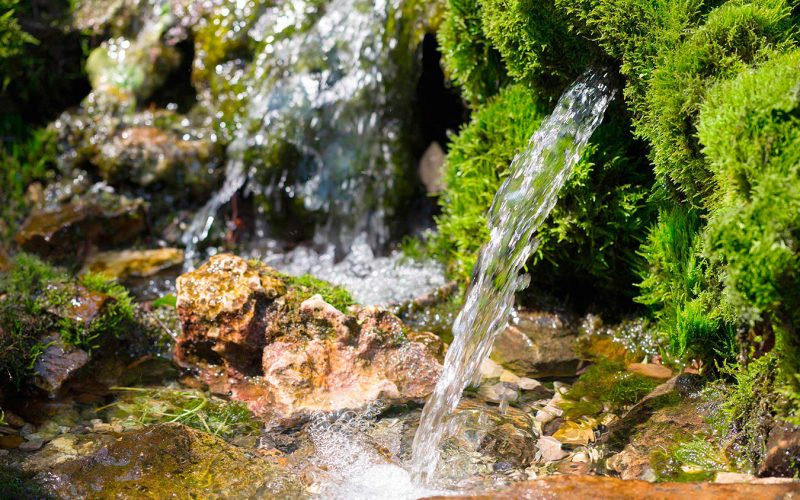Emerging from the depths of the Earth, water springs have long captivated humankind as a source of life-giving sustenance and a testament to the interconnectedness of our planet’s ecosystems. These natural wonders, often nestled amidst verdant landscapes or hidden within rocky crevices, offer a glimpse into the hidden circulation of groundwater, revealing the pristine purity and unique mineral composition that define their essence.
Delving into the definition of water springs
Water springs, also known as ‘seeps’ or ‘eyesores’, are natural openings in the Earth’s crust through which groundwater discharges onto the surface. These outflows serve as a vital connection between subterranean aquifers and the surrounding environment, providing a window into the intricate hydrological processes that shape our planet.
The formation of water springs is a testament to the dynamic interplay of geological forces and the relentless cycle of precipitation and infiltration. As rainwater soaks into the ground, it percolates through layers of rock and soil, gradually filling underground reservoirs known as aquifers. Over time, the pressure within these aquifers builds, forcing groundwater to seek the path of least resistance and emerge as a water spring.
Unraveling the quality of water spring water
Water spring water is often lauded for its exceptional purity and refreshing taste, a result of its natural filtration through layers of rock and soil. As groundwater travels through these subterranean passages, it sheds impurities and contaminants, acquiring a unique mineral composition that reflects the geological makeup of the surrounding terrain.
The quality of water spring water can vary depending on the specific geological conditions of its source. However, in general, water springs are characterized by low levels of organic matter, suspended solids, and dissolved salts. This purity, coupled with the absence of chlorine and other artificial treatments, makes water spring water a popular choice for those seeking a natural and refreshing alternative to tap water.
Unveiling the mineral composition of water spring water
The mineral content of water spring water is a defining characteristic, shaped by the geological formations through which the groundwater has traveled. These minerals, often present in trace amounts, contribute to the distinctive taste and aroma of water spring water and may offer potential health benefits.
Common minerals found in water spring water include:
- Calcium: Essential for bone health and muscle function.
- Magnesium: Plays a crucial role in nerve and muscle function, blood sugar control, and blood pressure regulation.
- Potassium: Supports heart health, nerve function, and muscle contractions.
- Sodium: Essential for maintaining fluid balance and regulating blood pressure.
- Iron: Vital for oxygen transport in the body and red blood cell formation.
- Zinc: Plays a role in immune function, wound healing, and cell growth.
It is important to note that the specific mineral content of water spring water can vary significantly depending on the local geology. While some water springs may provide a rich source of essential minerals, others may contain elevated levels of certain minerals that could pose health concerns for individuals with specific medical conditions.

Exploring additional details about water springs
Beyond their role as a source of drinking water, water springs hold significant ecological and cultural value. These natural outflows support diverse ecosystems, providing habitat for a variety of aquatic and terrestrial organisms. Additionally, water springs have played a prominent role in human history, often serving as gathering places, cultural landmarks, and sources of inspiration for art, literature, and folklore.
Ecological significance of water springs
Water springs are oases within terrestrial ecosystems, providing essential water sources for a wide range of organisms, including insects, amphibians, reptiles, birds, and mammals. The cool, moist microclimate surrounding water springs often supports unique plant communities, adding to the biodiversity of the surrounding landscape.
Cultural significance of water springs
Water springs have held deep cultural significance for millennia, often revered as sacred sites or sources of healing power. In many cultures, water springs are associated with creation myths, folklore, and spiritual beliefs. They have served as gathering places for communities, providing a focal point for social interactions and cultural practices.
Examples of water springs around the world
- Firoza Spring, Afghanistan: Nestled amidst the Hindu Kush mountains, Firoza Spring is renowned for its crystal-clear water and lush greenery.
- Pamukkale, Turkey: Famed for its cascading travertine terraces and mineral-rich pools, Pamukkale is a UNESCO World Heritage Site.
- Great Blue Spring, Florida, USA: The largest freshwater spring in the United States, Great Blue Spring is known for its exceptional clarity and vibrant turquoise hue.
- Evian Spring, France: The source of Evian bottled water, this natural spring is located in the French Alps, surrounded by pristine mountains and forests.
- Nohbec Waterfalls, Mexico: A series of cascading waterfalls fed by underground springs, Nohbec is a popular tourist destination known for its breathtaking beauty and refreshing natural pools. These are just a few examples of the countless water springs scattered across the globe, each with its own unique story and significance.
Conclusion
This springs stands as a testament to the remarkable interconnectedness of our planet’s ecosystems and the vital role of natural resources in sustaining life. By understanding the essence of water springs, their quality, mineral composition, and diverse values, we can appreciate their importance not only as a source of refreshment but also as a vital part of our natural world. Whether quenching our thirst, supporting vibrant ecosystems, or inspiring cultural traditions, water springs remind us of the enduring power and beauty of nature’s bounty.
Visit: garden water fountains.

